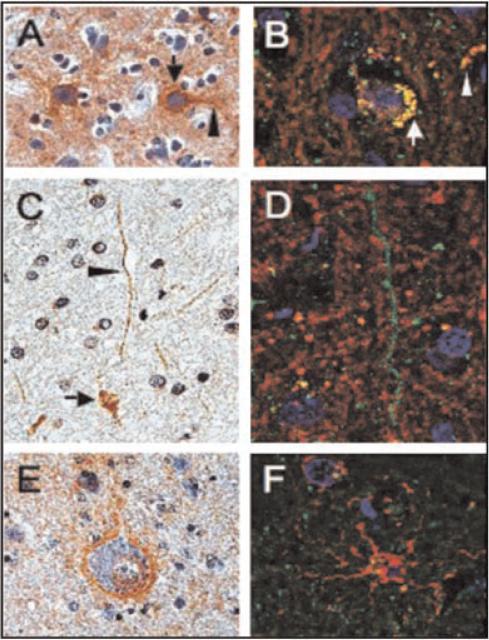Fig. 6.
Double immunofluorescence analyses of PINCH cellular localization in the frontal cortex of HIV patients. Panels A, C, and E are reacted with anti-PINCH antibody and counterstained with hematoxylin. Panels B, D, and F are double labeled with anti-PINCH antibody (green) and anti-neurofilament, -myelin basic protein, or -GFAP, (red, respectively). A: PINCH immunoreactivity (brown) is observed in neuronal cell bodies (arrow) and in neuronal processes (arrowhead) in an HIVE brain. B: Neuronal cells displayed both PINCH (green) and neurofilament (red) immunoreactivity with co-localization (yellow) observed in neuronal cell bodies (arrow) and in neuronal processes (arrowhead). C: PINCH (brown) immunoreactive neuronal cell bodies (arrow) and processes (arrowhead). D: Neuronal cell processes displayed PINCH immunoreactivity with a punctate, beadlike pattern (green), but did not co-localize with the surrounding myelin basic protein (red). E: Neuronal cell body and process displaying PINCH immunoreactivity (brown) surrounded by astroglial cell nuclei. F: Astroglial cell labeled with GFAP (red) showing no co-localization with PINCH (green). Scale bars = 10 μm. Reprinted with permission from Rearden et al. (2008).

